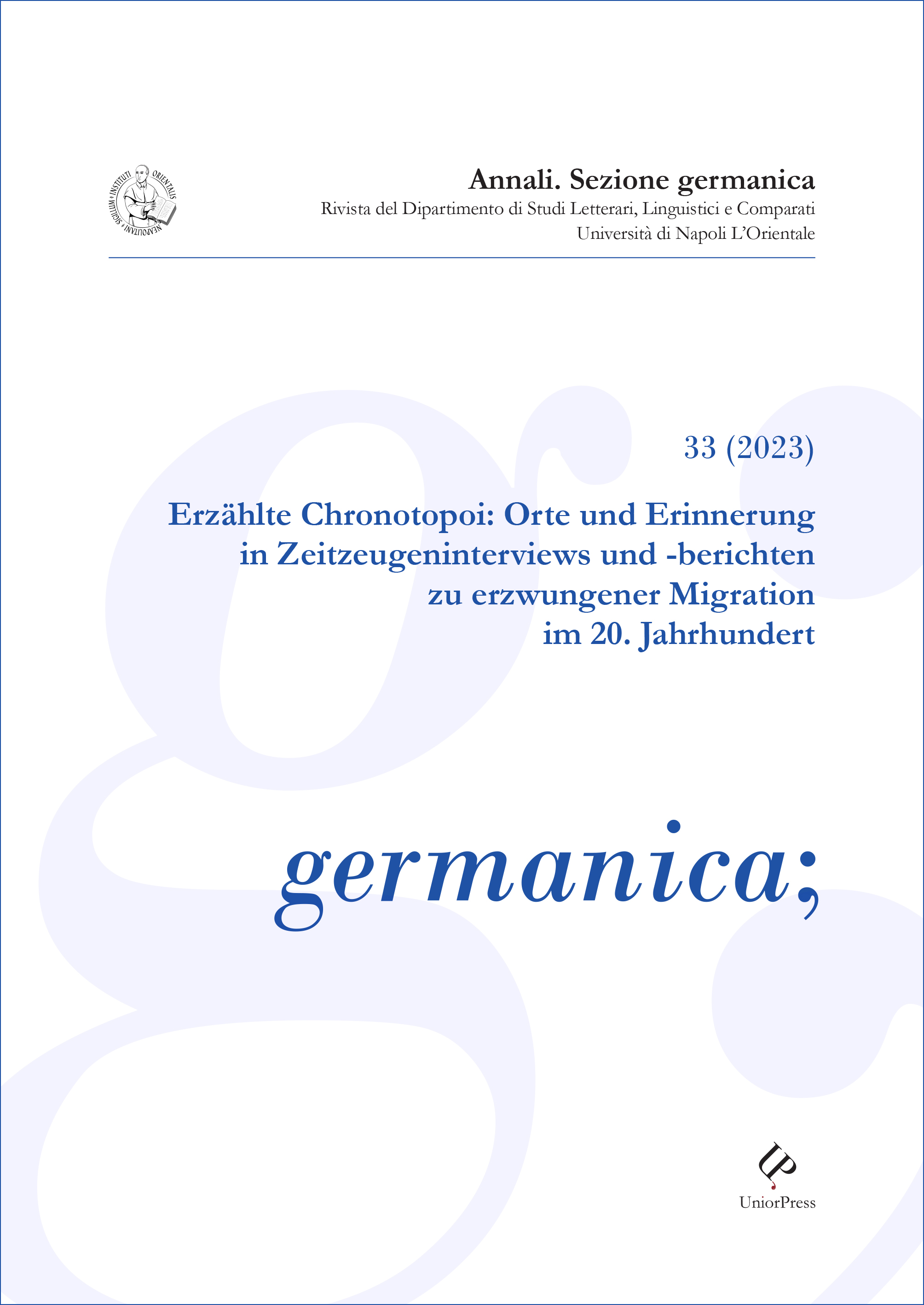Cronotopi familiari nell’Israelkorpus: luoghi e lingue degli intervistati di origine austriaca e le loro famiglie
Abstract
Le interviste narrative del cosiddetto Israelkorpus si configurano come narrazioni familiari in cui confluiscono diverse storie di migrazione e di fuga. Poiché numerosi parlanti hanno origini familiari che risalgono a regioni dell’Europa centrale e orientale in cui venivano parlate altre lingue oltre al tedesco (prima fra tutte lo yiddish), le biografie linguistiche delle loro famiglie risultano estremamente variegate. Ciò vale soprattutto per gli intervistati nati e/o cresciuti in Austria. Nel mio contributo intendo innanzitutto fornire alcuni dati quantitativi relativi al subcorpus della ricerca, che comprende tutte le interviste condotte con i parlanti di origine austriaca di prima generazione. Successivamente, grazie ad alcuni esempi significativi, viene mostrato quali cronotopi possono essere associati ai luoghi che gli intervistati menzionano in riferimento alle esperienze migratorie di alcuni loro familiari, per poi infine, mettere in relazione tali cronotopi con la loro biografia linguistica familiare
Copyright (c) 2024 Ramona Pellegrino

This work is licensed under a Creative Commons Attribution-NonCommercial-NoDerivatives 4.0 International License.
Gli autori che pubblicano su questa rivista accettano le seguenti condizioni:
- Gli autori mantengono i diritti sulla loro opera e cedono alla rivista il diritto di prima pubblicazione dell'opera, contemporaneamente licenziata sotto una Licenza Creative Commons che permette ad altri di condividere l'opera indicando la paternità intellettuale e la prima pubblicazione su questa rivista.
- Gli autori possono aderire ad altri accordi di licenza non esclusiva per la distribuzione della versione dell'opera pubblicata (es. depositarla in un archivio istituzionale o pubblicarla in una monografia), a patto di indicare che la prima pubblicazione è avvenuta su questa rivista.
- Gli autori possono diffondere la loro opera online (es. in repository istituzionali o nel loro sito web) prima e durante il processo di submission, poiché può portare a scambi produttivi e aumentare le citazioni dell'opera pubblicata (Vedi The Effect of Open Access).

